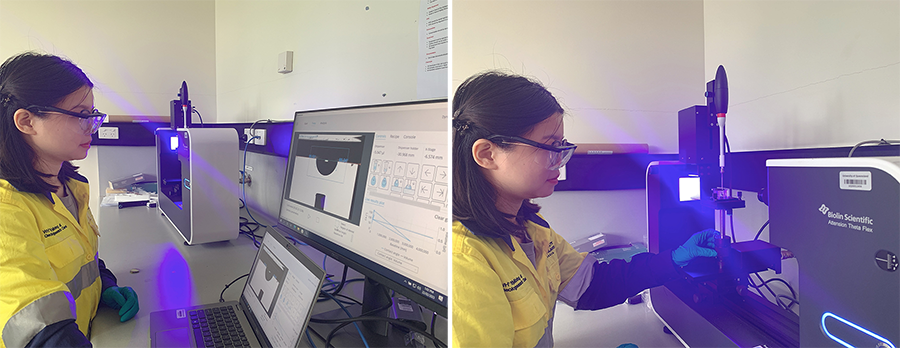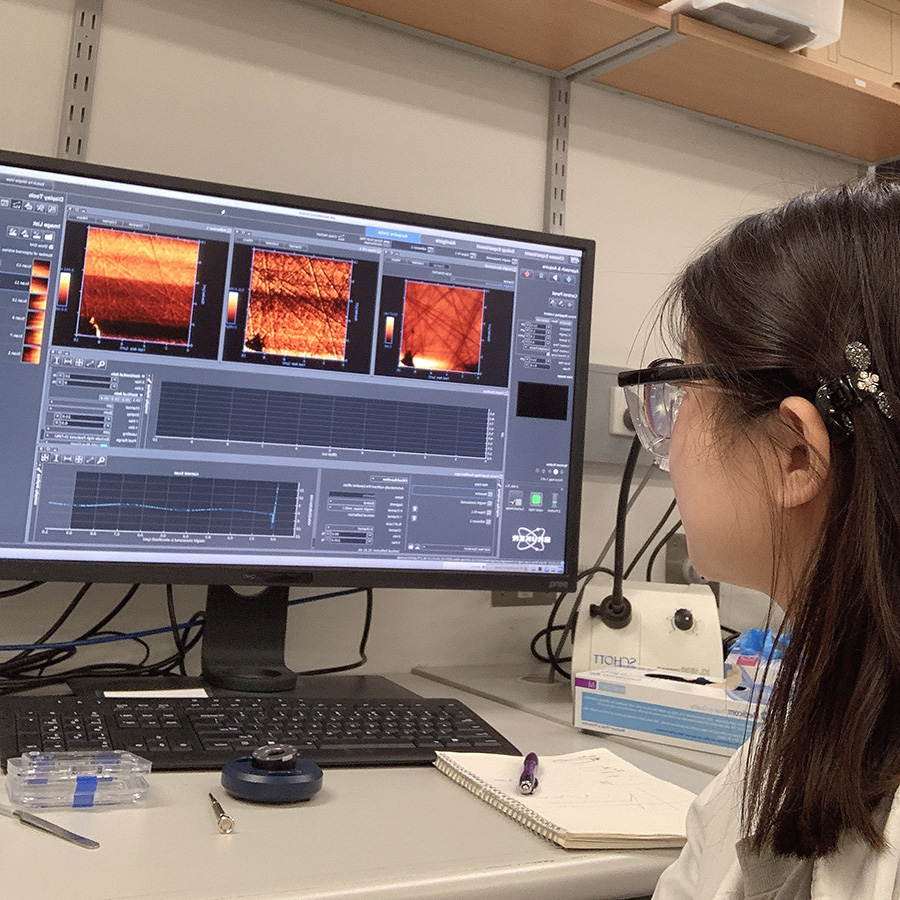How AFM and contact angle measurements are helping to unlock the interactions between bubble and mineral surface
PhD candidate Anran Niu from the Flotation Chemistry Group shares how she is using technologies such as AFM and contact angle measurements in her research project.
Coarse particle flotation has been of particular interest in recent years because it enables reducing energy consumption and early rejection of gangue while achieving higher efficiency of coarse particles.
However, coarse mineral particles are less liberated and therefore have more complex and heterogeneous chemical surfaces. Hence, there is a need to understand better the impact of surface chemistry on surface hydrophobicity and the hydrophobicity interaction.
My PhD project uses contact angle to assess surface hydrophobicity and atomic force microscopy (AFM) to measure the surface topography and interaction forces between the hydrophobic surfaces. The interaction between the bubble and mineral surface could be understood by the measurement from the contact angle instrument and AFM results. This information will then be correlated with surface chemistry information and translated into a mineral flotation context.
The contact angle is the angle formed between the solid surface, air, and liquid at the boundary of these phases. It is a common-used method to ascertain surface hydrophobicity. In the mineral flotation context, the contact angle is a quick and effective indicator to assess separation performance and the effect of using a collector or a depressant.
In the photos below, it is possible to see the contact angle measurement using the captive bubble method. After releasing a bubble from a needle, the bubble will attach to the surface and form an angle across the three-phase contact line. The software will quickly analyze the value of this contact angle from the image.

The other technology explored in my research project is atomic force microscopy. AFM is an advanced technique that has been widely used in the context of mineral flotation since the 21st century. In addition to being used as a force sensor, AFM can also provide surface topography imaging at nanometre resolution. By measuring the force and knowing the surface topography, it is easy to assess surface roughness, reagent adsorption, mechanical property, etc. This information is crucial to provide insights into mineral flotation.
In the photo below, you can see one of my AFM measurements on a mineral surface. The instrument directly provides the interaction information with the AFM tip (such as height) measured at each spot.

With the utilization of surface analytical techniques, surface chemical and physical information can be well correlated with its dynamic interaction with air (or liquid). This will not only bring improvements to the fundamental understanding of mineral surface chemistry or flotation performance but open a gate to the application of advancing surface analytical techniques into the mineral processing world.
Through my PhD research, I am contributing to a better understanding of the interaction between hydrophobic surfaces and giving insights to improve the practical coarse particle flotation. This is aligned with energy saving and mineral beneficiation.
